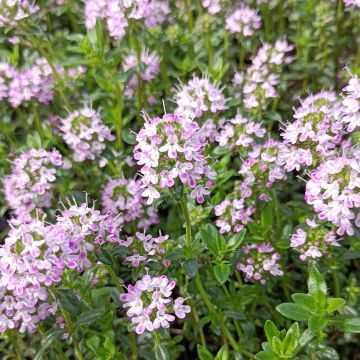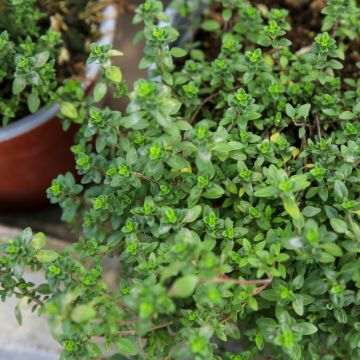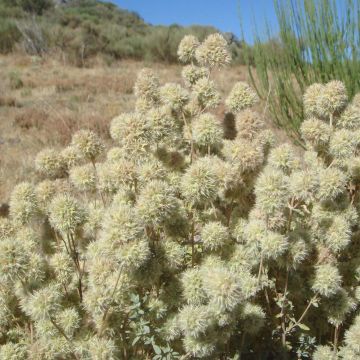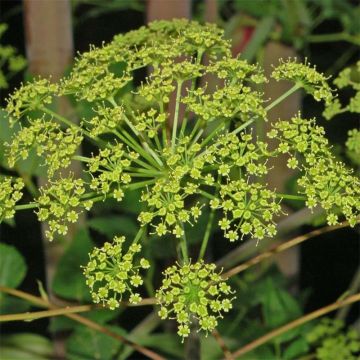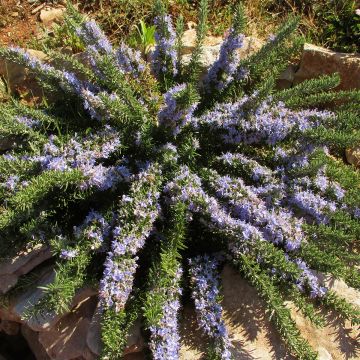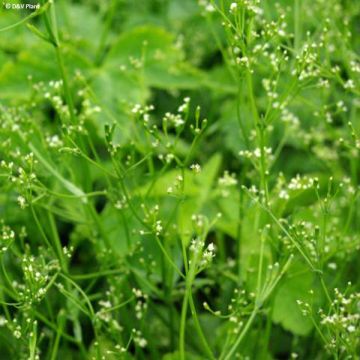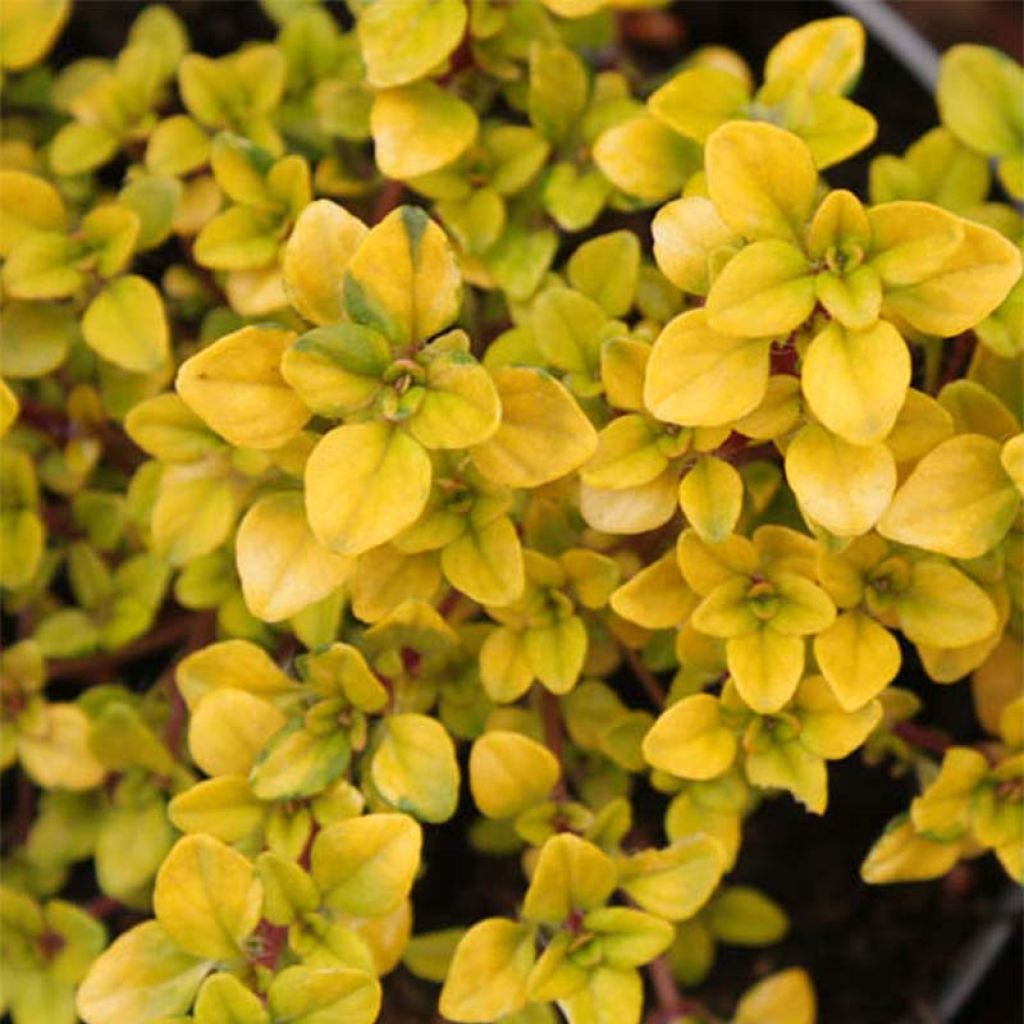

Thymus citriodorus Bertram Anderson - Lemon Thyme
Thymus citriodorus Bertram Anderson - Lemon Thyme
Thymus x citriodorus Bertram Anderson
Lemon Thyme
This item cannot be shipped to the selected country
Delivery charge from €5.90
Delivery charge from €5.90
More information
Schedule delivery date,
and select date in basket
This plant carries a 12 months recovery warranty
More information
We guarantee the quality of our plants for a full growing cycle, and will replace at our expense any plant that fails to recover under normal climatic and planting conditions.
From €5.90 for pickup delivery and €6.90 for home delivery
Express home delivery from €8.90.
From €5.90 for pickup delivery and €6.90 for home delivery
Express home delivery from €8.90.

Does this plant fit my garden?
Set up your Plantfit profile →
Description
Thymus citriodorus 'Bertram Anderson' is a variety of lemon thyme with a bushy and spreading habit, adapted to dry and poor soils, which is particularly decorative with its evergreen and glossy foliage, strongly variegated with yellow, exuding a beautiful lemon aroma. This perennial forms lilac to pink flowers in late spring or summer. Used as a herb, it is also a very pretty rockery or sunny border plant. It is essential in dry and rocky gardens, where the soil is thin and does not retain moisture.
Thyme 'Bertram Anderson' is a horticultural creation derived from Thymus x citriodorus. The origin of the latter is controversial, with some botanists considering it as a hybrid of Thymus vulgaris (the thyme of our scrublands), while others consider it as a separate species called Thymus serpyllium var. citriodorus. Whatever the case may be, 'Bertram Anderson', like its ancestors, is a medicinal and aromatic plant from the family Lamiaceae (or Labiatae), native to southern Europe and North Africa.
This variety has a spherical and spreading habit, almost prostrate and branched. It forms a foliage carpet 10 to 15 cm (4 to 6in) high and 30 to 40 cm (12 to 16in) wide. Its small oval and toothed foliage, variegated with yellow, covers root-like woody base stems, so that the plant spreads slowly. Its golden colour is more pronounced in summer, while in winter it appears brownish. Numerous essential oil glands are visible under a magnifying glass on the 1 cm (0.5in) long leaves. Flowering occurs from June to July-August depending on the climate. Tiny tubular and bilabiate flowers in pink-purple or lilac colour bloom in cymes on the current year's shoots, attracting many pollinating insects. Like many Mediterranean plants adapted to drought, thymes develop a double root system, consisting of a central taproot which sinks deep into the soil or into rock crevices, and a superficial network of very long rootlets capable of capturing the slightest surface moisture.
Lemon thyme 'Bertram Anderson' is decorative all year round and very hardy when planted in a perfectly drained or even arid soil. Its very bright, almost golden foliage sets it apart from other culinary plants. Plant it in a dry plant bed, with plants such as lavender, cistus, shrubby salvias, dwarf mugworts, cotton lavenders, or rosemary. It will thrive in a very sunny rockery, with Aubrieta canescens, golden or silver baskets, teucrium, and creeping ceanothus. It is also used as a herb; its fragrance of the scrubland is highly appreciated in cooking. Used alone or in a bouquet garni, combined with laurel, parsley, and rosemary, thyme leaves flavour stews, sauces, marinades, and court-bouillons. They are also used in infusions, known to relieve digestive ailments. A plant that loves full sun, thyme can also be planted in a dry border or in a pot, which allows it to be kept close at hand near the kitchen...
Report an error about the product description
Thymus citriodorus Bertram Anderson - Lemon Thyme in pictures
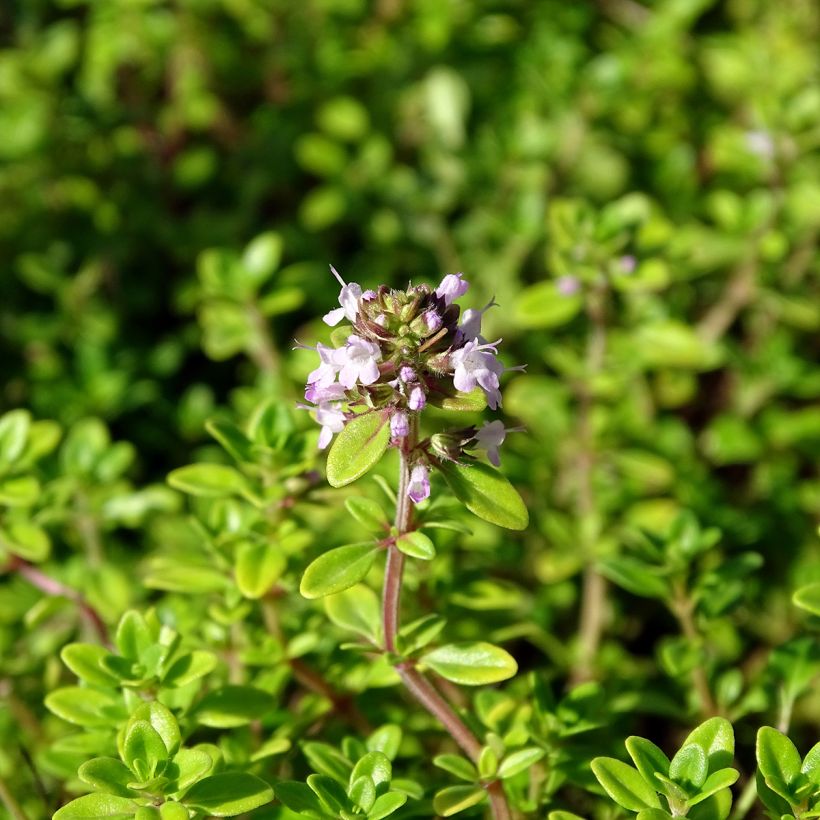



Flowering
Foliage
Plant habit
Botanical data
Thymus
x citriodorus
Bertram Anderson
Lamiaceae
Lemon Thyme
Cultivar or hybrid
Other Thyme
Planting and care
Lemon thyme requires a perfectly drained, rocky or sandy, poor soil, even limestone and rocky, to withstand the rigors of winter. Plant it after the last frost or in September-October in hot and dry climates. It cannot thrive without sunlight, and likes to have warm roots. When planted in overly rich soil, it becomes weak and lacks compactness. In poor and well-drained soil, it is hardy up to -12/-15°C (10.4/5°F), and will live longer. Plant it in a raised bed enriched with gravel, in a rock garden, in full sun against a south-facing wall, in a rocky or sandy slope, any substrate that does not retain moisture which would be fatal to it in winter, but also in summer, which is its vegetative rest period. The combination of heat and humidity favours the development of a fungus that attacks the collar of the plant and will cause its death as much as cold weather. It is preferable to cut back the stems after flowering to maintain a compact habit for the plant.
Like many Mediterranean plants adapted to drought, thyme plants from arid environments develop a double root system, composed of a central taproot which sinks deep into the soil or between rock crevices to draw water, and a superficial network of very long rootlets capable of extracting the slightest surface moisture. For this reason, these plants do not tolerate transplantation following uprooting. Regularly pruning them (on young wood), and after flowering, allows them to age better and remain compact.
Planting period
Intended location
Care
-
, onOrder confirmed
Reply from on Promesse de fleurs
Herbs
Haven't found what you were looking for?
Hardiness is the lowest winter temperature a plant can endure without suffering serious damage or even dying. However, hardiness is affected by location (a sheltered area, such as a patio), protection (winter cover) and soil type (hardiness is improved by well-drained soil).

Photo Sharing Terms & Conditions
In order to encourage gardeners to interact and share their experiences, Promesse de fleurs offers various media enabling content to be uploaded onto its Site - in particular via the ‘Photo sharing’ module.
The User agrees to refrain from:
- Posting any content that is illegal, prejudicial, insulting, racist, inciteful to hatred, revisionist, contrary to public decency, that infringes on privacy or on the privacy rights of third parties, in particular the publicity rights of persons and goods, intellectual property rights, or the right to privacy.
- Submitting content on behalf of a third party;
- Impersonate the identity of a third party and/or publish any personal information about a third party;
In general, the User undertakes to refrain from any unethical behaviour.
All Content (in particular text, comments, files, images, photos, videos, creative works, etc.), which may be subject to property or intellectual property rights, image or other private rights, shall remain the property of the User, subject to the limited rights granted by the terms of the licence granted by Promesse de fleurs as stated below. Users are at liberty to publish or not to publish such Content on the Site, notably via the ‘Photo Sharing’ facility, and accept that this Content shall be made public and freely accessible, notably on the Internet.
Users further acknowledge, undertake to have ,and guarantee that they hold all necessary rights and permissions to publish such material on the Site, in particular with regard to the legislation in force pertaining to any privacy, property, intellectual property, image, or contractual rights, or rights of any other nature. By publishing such Content on the Site, Users acknowledge accepting full liability as publishers of the Content within the meaning of the law, and grant Promesse de fleurs, free of charge, an inclusive, worldwide licence for the said Content for the entire duration of its publication, including all reproduction, representation, up/downloading, displaying, performing, transmission, and storage rights.
Users also grant permission for their name to be linked to the Content and accept that this link may not always be made available.
By engaging in posting material, Users consent to their Content becoming automatically accessible on the Internet, in particular on other sites and/or blogs and/or web pages of the Promesse de fleurs site, including in particular social pages and the Promesse de fleurs catalogue.
Users may secure the removal of entrusted content free of charge by issuing a simple request via our contact form.
The flowering period indicated on our website applies to countries and regions located in USDA zone 8 (France, the United Kingdom, Ireland, the Netherlands, etc.)
It will vary according to where you live:
- In zones 9 to 10 (Italy, Spain, Greece, etc.), flowering will occur about 2 to 4 weeks earlier.
- In zones 6 to 7 (Germany, Poland, Slovenia, and lower mountainous regions), flowering will be delayed by 2 to 3 weeks.
- In zone 5 (Central Europe, Scandinavia), blooming will be delayed by 3 to 5 weeks.
In temperate climates, pruning of spring-flowering shrubs (forsythia, spireas, etc.) should be done just after flowering.
Pruning of summer-flowering shrubs (Indian Lilac, Perovskia, etc.) can be done in winter or spring.
In cold regions as well as with frost-sensitive plants, avoid pruning too early when severe frosts may still occur.
The planting period indicated on our website applies to countries and regions located in USDA zone 8 (France, United Kingdom, Ireland, Netherlands).
It will vary according to where you live:
- In Mediterranean zones (Marseille, Madrid, Milan, etc.), autumn and winter are the best planting periods.
- In continental zones (Strasbourg, Munich, Vienna, etc.), delay planting by 2 to 3 weeks in spring and bring it forward by 2 to 4 weeks in autumn.
- In mountainous regions (the Alps, Pyrenees, Carpathians, etc.), it is best to plant in late spring (May-June) or late summer (August-September).
The harvesting period indicated on our website applies to countries and regions in USDA zone 8 (France, England, Ireland, the Netherlands).
In colder areas (Scandinavia, Poland, Austria...) fruit and vegetable harvests are likely to be delayed by 3-4 weeks.
In warmer areas (Italy, Spain, Greece, etc.), harvesting will probably take place earlier, depending on weather conditions.
The sowing periods indicated on our website apply to countries and regions within USDA Zone 8 (France, UK, Ireland, Netherlands).
In colder areas (Scandinavia, Poland, Austria...), delay any outdoor sowing by 3-4 weeks, or sow under glass.
In warmer climes (Italy, Spain, Greece, etc.), bring outdoor sowing forward by a few weeks.




































